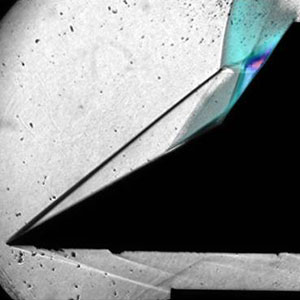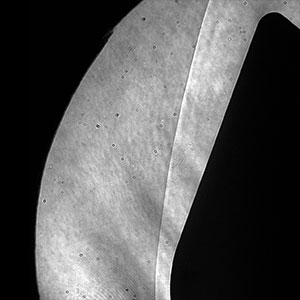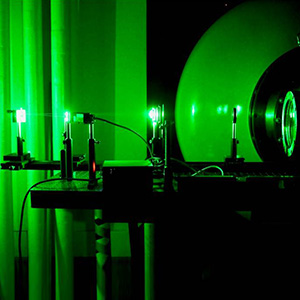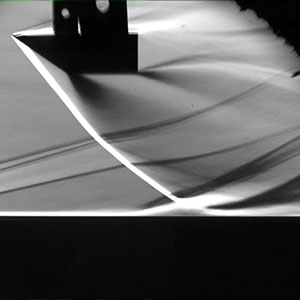Research
Joanna Austin's research is focused on fundamental problems in reactive, compressible flows across a broad range of applications, including hypervelocity flight and planetary entry, supersonic combustion and detonation, bubble dynamics, and explosive geological events.
Research Projects

Hypervelocity Shock-Boundary Layer Interaction
Shock-boundary layer interactions can lead to unsteady, potentially extreme, aerodynamic loads, flow separation with loss of control authority, and severe, localized, heating. In hypervelocity flows, shock-boundary layer interactions are highly sensitive to the thermochemical state of the gas, with the macroscopic features of the flow responding to changes in the molecular processes. We apply spectroscopic flow field diagnostics to probe the nonequilbrium processes directly and provide insight into the complex, nonlinear interactions between the gas dynamics and thermochemistry.

Blunt Body Aerothermodynamics in CO2 Martian Entry
The intent to launch higher mass vehicles to Mars for robotic sample return and human exploration requires improved predictive capabilities for aerodynamic and thermal loads. Recent evidence has shown that CO2 and CO mid-wave infrared radiation, initially assumed negligible in the design of MSL heat shield, should be considered in portions of the trajectory, for example when velocities are lower. We simulate Martian CO2 conditions in two high-enthalpy facilities with different means of gas acceleration to hypervelocity conditions that mimic planetary entry.

Advancing Transition Experiments in High Enthalpy Flows
The experimental challenges of both achieving and making measurements to examine boundary layer transition in high-enthalpy hypersonic flows are such that ground-based data are extremely scarce. Mechanism-based prediction capabilities are needed, and diagnostic capabilities to interrogate instability mechanisms as well as freestream fluctuations are key. A central facet of this project are non-intrusive, high bandwidth measurements in the frequency range appropriate for high enthalpy flows using Focused Laser Differential Interferometry (FLDI), building on previous work in the Caltech Hypersonics Group.

High-Speed Fluid-Structure Interaction
Understanding the effects of fluid-structure interactions caused by turbulent boundary layers and shock boundary layer interactions on thin, compliant structures is crucial for developing light-weight, reusable, high-speed vehicles. Although the issue of high speed fluid-structure coupling has been of interest for many years, until recently there has been little experimental work on high-speed FSI. We investigate the degree of coupling between the fluid and the structure that needs to be captured in modeling efforts through a series of experiments from rigidly deformed to dynamically responding panels.